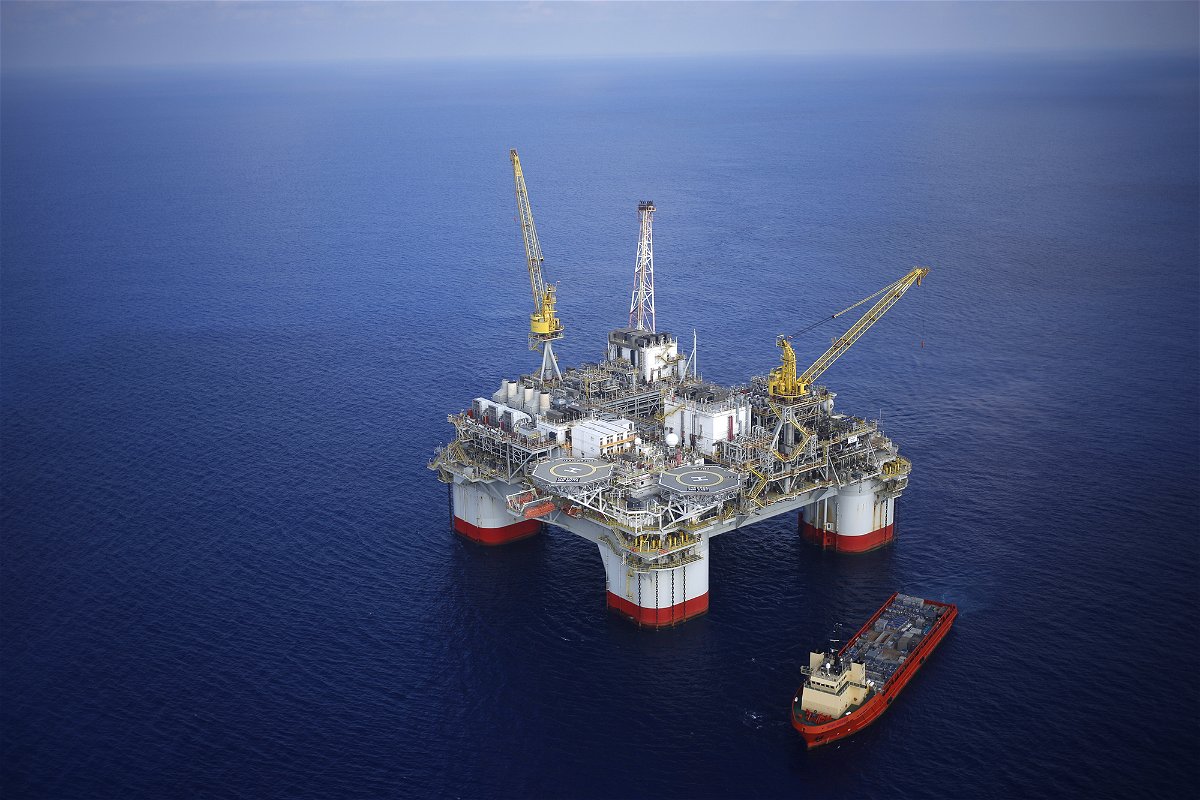Oil and gas production in Gulf of Mexico has twice the climate impact of official estimates, researchers say

An oil platform in the Gulf of Mexico off the coast of Louisiana is seen here in 2018.
By Laura Paddison, CNN
Oil and gas production in the Gulf of Mexico is belching out significantly higher levels of potent, planet-heating gas than previously thought, according to new research, which found the climate effects of the operations are twice that of official estimates.
The report comes as the Biden administration last month put millions of acres of water in the Gulf of Mexico up for auction to offshore oil and gas drilling, and has plans for further auctions.
In August 2020, scientists spent 10 days doing airborne surveys of more than 50 platforms in the Gulf of Mexico. Flying in concentric rings around the facilities, they measured plumes of carbon pollution from burning processes as well as methane pollution from leaks and venting.
They combined the findings with previous emissions surveys and inventories to calculate the “carbon intensity” of oil and gas operations — the total amount of planet-warming pollution released for each unit of energy produced.
Their results revealed a climate impact twice as large as that estimated by government inventories, driven by high levels of methane — a powerful greenhouse gas more than 80 times more potent than carbon dioxide in its first two decades in the atmosphere.
Methane pollution in the Gulf of Mexico totaled 600,000 metric tons a year, according to the report, which found that average methane levels in federal waters were three times higher than official inventories, and 13 times higher in state waters.
“Inventories are generally challenged by methane,” Alan Gorchov Negron, a study co-author and climate science researcher at the University of Michigan, told CNN. Unlike carbon pollution, which comes from burning the fuel, methane from oil and gas operations escapes into the atmosphere — either through deliberate venting and flaring or accidentally through dilapidated equipment or unknown leaks.
The study found that the worst climate performers were platforms in shallow waters, which include older style “central-hub platforms” that collect oil and gas from smaller platforms for processing. These have an “extraordinarily high” carbon intensity that far exceeds that of deeper water facilities, according to the report’s authors.
There are multiple reasons for this outsized climate impact of shallow-water platforms, according to the report, including persistent venting, emissions associated with equipment as well as the tendency of the facilities to be older and sometimes poorly maintained.
Even though shallow-water oil and gas activities in the Gulf of Mexico have declined since 2000, the facilities will still likely have an impact for years to come, especially as these areas are included in prospective lease sales, the report noted.
There is an upside to identifying their high levels of pollution, said Eric Kort, a report co-author and associate professor in climate and space sciences and engineering at the University of Michigan.
“The good news is that the bulk of emissions comes from one class of facilities, which means mitigation measures can be more targeted,” he told CNN.
The report outlines a series of measures to tackle planet-warming pollution from offshore oil and gas, including replacing venting with efficient flaring, refurbishing and repairing equipment, and plugging and abandoning platforms which cannot be repaired or improved.
The study’s findings may be particularly pertinent, Negron said, as “the Gulf of Mexico is on the eve of a series of expansions in production.”
The Inflation Reduction Act, the landmark climate and energy bill signed into law last year, includes provisions inserted by Sen. Joe Manchin, a West Virginia Democrat, for more of the Gulf of Mexico to be made available for oil and gas drilling. Manchin has argued the US should ramp up its oil and gas drilling to become more energy independent, especially as gas prices rise.
There are up to 10 new lease sales proposed between now and 2028, according to the report.
Climate considerations must legally be factored into decisions on drilling. In 2022, a federal judge invalidated an 80-million-acre oil and gas lease sale in the Gulf of Mexico for not taking climate impacts into account, after a coalition of environmental groups sued the Biden administration.
“This discussion around carbon intensity in the Gulf of Mexico will pop up in at least 10 more environmental impact statements,” Negron said.
Athan Manuel, director of the Lands Protection Program at the Sierra Club, said: “This study underscores what we’ve long known to be true: offshore drilling in the Gulf puts coastal communities at risk and threatens devastating and irreversible harm to our climate.”
“The Biden administration should take this alarming data seriously and protect our climate and communities by putting an end to all new leasing in the Gulf,” he told CNN.
The-CNN-Wire
™ & © 2023 Cable News Network, Inc., a Warner Bros. Discovery Company. All rights reserved.